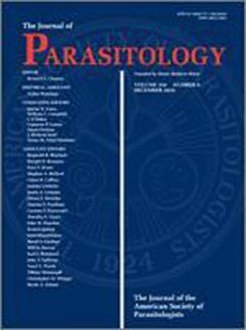Myxosporean species in the genus Cystodiscus are parasites of amphibians and have been reported from several continents. Typically used for the identification of myxozoans, the spores produced by these species are similar to one another, possessing 2 polar capsules and being ovoid. The number of transverse depressions on the spore can be useful for delineating species, but these can sometimes be difficult to distinguish. In North America, Cystodiscus serotinus and Cystodiscus melleni have been described, and for C. serotinus in particular, numerous reports and a wide range of hosts have been associated with this species. Given the challenges of identifying some of these species, we questioned whether all encounters of Cystodiscus species can be attributed to these 2 described species, or if there may be additional undescribed species or cryptic species. Over 7 yr, 383 amphibians representing 13 species of toads, frogs, and salamanders were collected from sites in Oklahoma and Arkansas. Cystodiscus infections were found in 56 individuals (14.6%). Tissues from these infected individuals were preserved in alcohol for genetic analysis. The small subunit (SSU) and large subunit (LSU) ribosomal RNA genes were partially sequenced and analyzed phylogenetically. Nine distinct SSU sequence types and 7 distinct LSU sequence types were identified. Phylogenetically, sequence types were attributable to C. serotinus, C. melleni, Cystodiscus axonis, and an undescribed species. For the previously described species, there were multiple SSU sequence types: 4 for C. serotinus and 2 for both C. melleni and C. axonis. Phylogenetic patterns were similar for the LSU sequence analysis using a shorter sequence than the SSU, and we propose that the LSU is useful for initial barcoding of Cystodiscus species in any future surveys. In our qualitative assessment of sequence types compared to geography and host species, SSU types C1 and C2 (C. axonis) were only found in Union County, Arkansas, and McCurtain County, Oklahoma, respectively. Also, salamanders were only infected with SSU types B or D (C. melleni), and type B was only found in salamanders. Our finding of C. axonis in North America is notable because this species was described in Australia and is associated with host pathology. Our work reveals that there are cryptic species of Cystodiscus in the United States, one of which may be a pathogen, highlighting the importance of genetic analysis for future surveys of these species.
How to translate text using browser tools
1 December 2021
Genetic Diversity of Cystodiscus Species in Amphibians in the Southern United States
Christopher M. Whipps,
Chris T. McAllister,
K. Alice Lindsay
ACCESS THE FULL ARTICLE
amphibians
Arkansas
Cystodiscus axonis
Cystodiscus melleni
Cystodiscus serotinus
Myxosporean
Myxozoa






